Religion: Religious Leaders Post-1900
Ma Anliang (1855-1918)
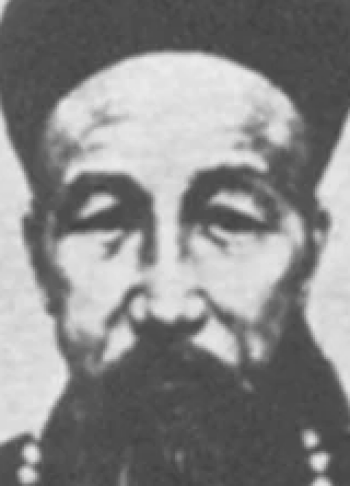
Religion and Branch: Islam (Sunni)
Title: Military Leader, Warlord
Ma Anliang was a prominent Muslim general and leader in China during the early 20th century. He served the Qing Dynasty as a military general and was involved in suppressing several rebellions. With the fall of the Qing Dynasty and establishment of the Republic of China, he transitioned into the role of a warlord, governing parts of the Gansu province.
As a prominent Hui Muslim leader, Anliang had significant influence within the Hui Muslim community. He strived to maintain a balance between his Islamic faith and loyalty to the central government. This sometimes led him to take actions against Muslim rebels, which drew criticism from some Hui factions.
While remembered as a strong military leader and influential figure among the Hui Muslims, Anliang is criticized for some of his actions against fellow Muslims. His life exemplifies the complexities of religious and political identities in a rapidly changing China.
Wu Leichuan (1870-1944)
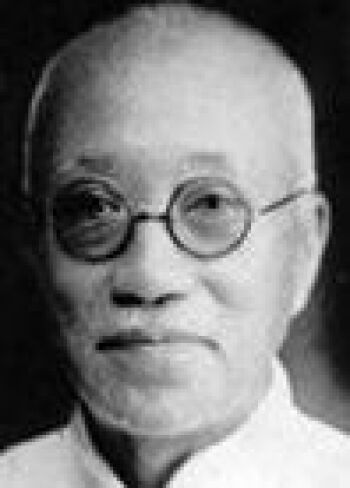
Religion and Branch: Protestant Christianity
Title: Theologian
Wu Leichuan was an influential Protestant Christian leader and thinker in early 20th-century China. He played a pivotal role in the indigenization of Christianity in China, working to bridge the gap between traditional Chinese culture and Christian teachings.
Educated both in China and the West, Leichuan was deeply familiar with Confucianism, and he sought ways to reconcile it with Christian beliefs. He proposed that Christianity in China should be rooted in Chinese culture and thought, emphasizing the importance of understanding Jesus through the lens of Confucian teachings. His works contributed significantly to the theological discourse of the period, prompting reflection on the nature of God, Jesus, and salvation in the Chinese context.
Leichuan's influence extended beyond theology; he also played active roles in education and politics. He served in various educational institutions and even became involved in the drafting of the Chinese constitution in the 1930s. His efforts to indigenize Christianity and promote dialogue between the faith and Chinese culture remain an essential part of the legacy of Christianity in China.
Paul Wei (1879-1919)
Religion and Branch: Protestant Christianity
Title: Founder of the True Jesus Church
Paul Wei, also known as Wei Enbo, is known as a prominent figure in the history of Chinese Christianity. In 1917, after being influenced by Pentecostal teachings and experiences, he established the True Jesus Church, which emphasizes the importance of the Holy Spirit in worship and the authority of the Bible. It also upholds the belief in the imminent return of Jesus Christ as well as the importance of speaking in tongues, observing the Sabbath, and adult baptism by immersion.
Despite facing opposition and challenges, the True Jesus Church grew rapidly throughout China, becoming one of the country's largest Christian groups and expanding internationally. Wei played a pivotal role in the early expansion of the church, setting its foundational teachings and practices.
Zhang Tianran (1889-1947)
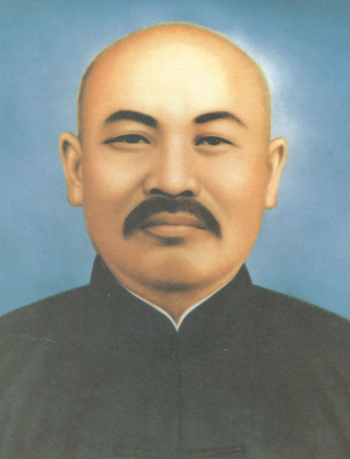
Religion and Branch: Taoism
Title: Spiritual Leader, Founder of Wudangshan Taoist Association
Zhang Tianran was the founder and spiritual leader of the Yiguandao (meaning "Consistent Way" or "Persistent Way") religious movement, which is a syncretic Chinese folk religious sect. He was born in Shandong Province, China, and from a young age, he was exposed to various religious practices, which influenced his later teachings.
Tianran is credited with unifying various branches of the Xiantiandao ("Way of Former Heaven") tradition under the banner of Yiguandao in the early 20th century. His teachings synthesized elements from Confucianism, Taoism, and Buddhism. Yiguandao emphasized salvation, millenarian beliefs, vegetarianism, and the veneration of a celestial mother figure, often identified with Guanyin (the bodhisattva of compassion). The movement faced severe persecution during Zhang's lifetime, particularly by the Nationalist government of Chiang Kai-shek. As a result, many Yiguandao adherents went underground or fled.
After the Chinese Civil War and nationalists' retreat to Taiwan, Yiguandao began to flourish on the island. This was especially the case during the latter part of the 20th century when religious restrictions were loosened in Taiwan. Yiguandao became one of the major religious movements in China and Taiwan. Tianran's religious legacy left a significant impact on the region's religious environment in the decades following his death.
Taixu (1890-1947)

Religion and Branch: Buddhism
Title: Monk, Philosopher, Reformer
Born Lǔ Pèilín, Taixu was a prominent and influential 20th-century Chinese Buddhist monk, philosopher, and reformer. He played a significant role in revitalizing Chinese Buddhism by proposing and initiating reforms to adapt the religion to the modern era. His primary aim was to make Buddhism relevant and beneficial to the common populace as well as address contemporary challenges.
Taixu was a proponent of the Humanistic Buddhism movement that emphasized direct service to people's physical and spiritual needs rather than focusing primarily on monastic rituals and practices. He was also deeply involved in promoting international Buddhist exchanges and understanding, aspiring for a global Buddhist renaissance. Despite facing controversies and challenges from more conservative quarters of the Buddhist establishment, his ideas continue to influence Chinese Buddhism and its diaspora today.
Y. T. Wu (1893-1979)
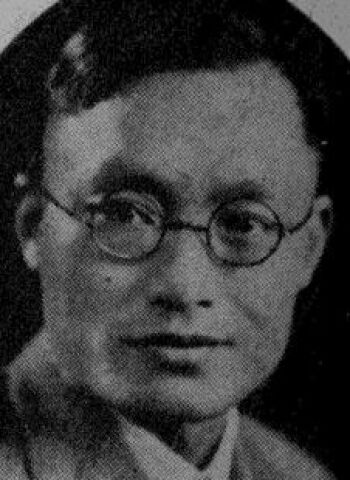
Religion and Branch: Protestant Christianity
Title: Religious Leader
Y. T. Wu (Wú Yaòzōng) was one of the most influential Protestant leaders in 20th-century China. He became a committed Christian during his university years and dedicated his life to spreading the Christian message and engaging with social issues from a Christian perspective.
In the 1950s, as the Communist Party established control over mainland China, Wu played a pivotal role in founding the Three-Self Patriotic Movement (TSPM), which sought to establish a self-governing, self-supporting, and self-propagating Chinese Protestant Church, free from foreign control. Through the TSPM, Wu advocated for a uniquely Chinese expression of Christianity that was loyal to the socialist state. While his collaboration with the Communist government was controversial, his efforts shaped the trajectory of Protestant Christianity in China for decades.
Liang Shuming (1893-1988)
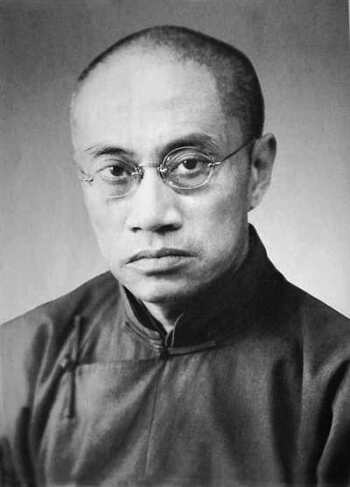
Religion and Branch: Confucianism and Buddhism
Title: Philosopher, Activist, Writer, Reformer
Born Liang Huanding, Liang Shuming was a prominent Chinese philosopher and reformer who sought to harmonize Confucian, Buddhist, and Western philosophical ideals. He played a significant role in the early 20th-century revival of Confucianism in response to the cultural and ideological challenges posed by Western thought and the political turmoil of China at that time.
Concerned with the rapid modernization of China and the decline of rural societies, Shuming became involved in the Rural Reconstruction Movement, aiming to uplift and modernize China's countryside without losing its traditional values. In his renowned work Eastern and Western Cultures and Their Philosophies, Liang juxtaposed Eastern and Western philosophical paradigms, arguing that while Western philosophy sought to overcome nature, Eastern philosophy sought harmony with it.
While deeply rooted in Confucianism, Shuming was also influenced by Buddhism. He believed in the idea of the Buddhist "life-world" and tried to reconcile it with Confucian ethics. Through his writings and activism, Shuming became a voice of modern Confucianism, advocating for a synthesis of tradition and modernity in China's path forward.
Wang Ming-Dao (1900-1991)
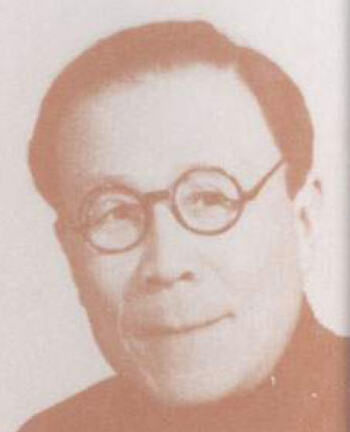
Religion and Branch: Protestant Christianity
Title: Pastor, Theologian, Evangelist
Wang Ming-Dao was a prominent Chinese pastor, theologian, and evangelist. Often hailed as one of the most important Christian leaders in 20th-century China, he is renowned for his steadfast commitment to the evangelical and indigenous Christian movement in China, resisting efforts by the Communist government to control churches via the Three-Self Patriotic Movement. Ming-Dao played an influential role in the development and growth of the Chinese House Church movement, which emphasizes the establishment of independent, self-governing Christian communities outside of the state-sanctioned Three-Self Patriotic Movement.
During his ministry, Ming-Dao emphasized the importance of personal repentance, the experience of salvation, and living a life transformed by the Gospel. His resistance to state intervention in church affairs led to his imprisonment for over two decades. Even in prison, he maintained his faith, although he briefly recanted under pressure. After his release, Ming-Dao continued his ministry and remains a symbol of resolute faith for many Chinese Christians today. His teachings and writings, especially during his incarceration, have left a profound impact on Chinese Christianity and beyond.
Muhammad Amin Bughra (1901-1965)
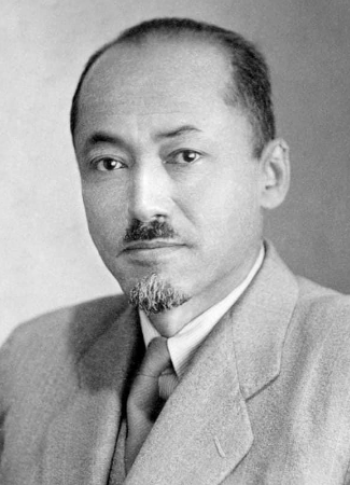
Religion and Branch: Islam
Title: Jadidist, Leader of Turkish Islamic Republic of East Turkestan, Politician
Muhammad Amin Bughra was a Uyghur Muslim leader, primarily known for his activities in East Turkestan (now the Xinjiang Uyghur Autonomous Region in China). He was a prominent leader during the establishment of the short-lived East Turkestan Republics in the 1930s and 1940s, which were efforts to establish an independent Uighur state in Xinjiang.
The Uighur nationalist movement, of which Bughra was a part, was influenced by the pan-Turkism ideology that had its roots in the late Ottoman era and early Republican Turkey. The idea was to unite all Turkic-speaking peoples, spanning from Anatolia to Central Asia, into a single political entity or at least a cultural sphere.
While Bughra was a Muslim, his efforts in Xinjiang were primarily nationalist in nature. However, like many Turkic nationalists of the period, Islam played a foundational role in his identity and the identity of the Uighur people he represented. After the second East Turkestan Republic was absorbed into the People's Republic of China, Bughra's influence waned, and he went into exile. Many Uighur nationalists, including his relatives, fled to neighboring regions or countries.
Bughra eventually moved to Turkey, which has historically been a destination for Turkic and Muslim exiles given its cultural, linguistic, and religious connections to Central Asian Turkic peoples. In Turkey, he continued his efforts to advocate for the Uighur cause and the idea of an independent East Turkestan. Turkey, especially during the early Republican period, was seen as a beacon of modern Turkic nationalism and was thus a source of inspiration for Uighur leaders like Bughra. Moreover, given the shared linguistic, cultural, and religious ties, there was a degree of sympathy and support in Turkey for the Uighur cause.
Bughra's time in exile was marked by efforts to gain international attention and support for the Uighur nationalist movement, though by the mid-20th century, geopolitical realities made it challenging to secure significant international backing. He passed away in Turkey in 1965.
Dilgo Khyentse Rinpoche (circa 1910-1991)
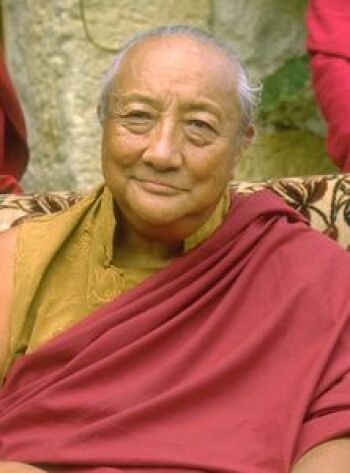
Religion and Branch: Tibetan Buddhism (Nyingma)
Title: Vajrayana Master, Scholar, Writer, Educator
Dilgo Khyentse Rinpoche was one of the foremost Tibetan Buddhist teachers of the 20th century, known for his vast knowledge, profound teachings, and immense compassion. Born in Eastern Tibet, he was recognized as a reincarnated lama and underwent extensive training in the Tibetan Buddhist tradition. He studied with numerous great masters from various Tibetan Buddhist traditions, making him a holder of a vast array of lineages and teachings.
After the Chinese invasion of Tibet in the 1950s, many Tibetan Buddhist practices and institutions came under severe repression. Like many Tibetan spiritual leaders, Rinpoche faced challenges in preserving the teachings. He eventually went into exile and spent significant time in Bhutan, Nepal, and India, where he taught countless students and helped reestablish Tibetan Buddhist practices among the refugee community. His teachings also reached the West, and he played a crucial role in introducing Tibetan Buddhism to a global audience.
Later in his life, with the easing of restrictions on religious practices in China, Rinpoche visited Tibet multiple times, where he taught and helped in the revival of Buddhist practices. He played a role in the resurgence of Tibetan Buddhism in China after the Cultural Revolution. His writings, teachings, and commentaries continue to serve as essential resources for Buddhists worldwide. He was also instrumental in training the next generation of Tibetan Buddhist teachers.
Trulshik Rinpoche (1923-2011)
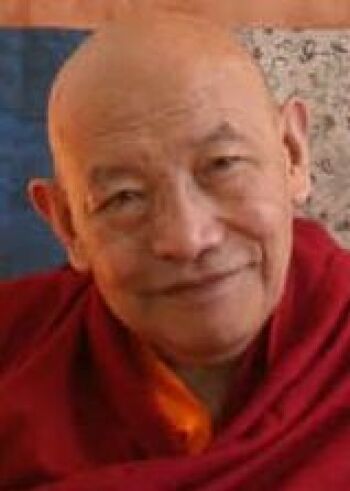
Religion and Branch: Tibetan Buddhism (Nyingma)
Title: Lama, Spiritual Leader
Trulshik Rinpoche, born in the southern Tibetan region of Yardrok, was one of the most revered lamas in the Nyingma tradition of Tibetan Buddhism. He was recognized as the incarnation of the previous Trulshik Rinpoche and underwent rigorous spiritual training from a young age, becoming a lineage holder of many teachings and practices within the Nyingma tradition.
Following the Chinese invasion of Tibet in the 1950s, Rinpoche went into exile in Nepal, where he played a crucial role in preserving and revitalizing Tibetan Buddhist teachings. He established Thubten Choling Monastery in Nepal's Solu Khumbu region, which became a hub for Buddhist practice and learning. Rinpoche was also the teacher to many prominent figures in Tibetan Buddhism, including the 14th Dalai Lama. Despite the geopolitical affiliations, his influence transcended borders, and he was deeply respected in both the exiled Tibetan community and among Tibetan Buddhists inside China.
Lin Zhao (1932-1968)
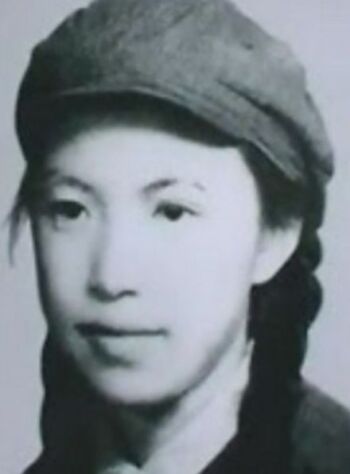
Religion and Branch: Christianity
Title: Activist, Journalist, Dissident
Born Peng Lingzhao, Lin Zhao was a Chinese Christian, activist, and journalist who is most prominently remembered as a fierce critic of Mao Zedong's Communist regime in China and for her embrace of Christianity. Originally an enthusiastic supporter of the Communist Party, she became disillusioned due to the party's oppressive policies, especially after the Anti-Rightist Campaign in 1957.
Zhao's dissent led to her imprisonment, but even from behind bars, she continued to pen critical writings using her own blood as ink when denied other means. Her Christian faith became evident in her prison writings, where she often invoked God and Jesus, seeing her suffering as a form of Christian martyrdom. In 1968, she was executed for her opposition to the regime. Posthumously, Zhao has become a symbol of resistance to oppressive rule and an emblem of Christian sacrifice in the face of persecution in China.
Tam Shek-wing (1935 to Present)

Religion and Branch: Buddhism
Title: Scholar, Artist, Professor
Tam Shek-wing is a Chinese Buddhist scholar and artist known for his contributions to the propagation and understanding of Buddhism, especially in the context of modern Chinese society. He became a disciple of H.H. Dudjom Rinpoche in 1972 and was ordained Vajra Archarya in 1984. Shek-wing is well-respected for his depth of knowledge in both the Pure Land and Chan (Zen) traditions of Buddhism. He has been instrumental in bridging traditional Buddhist teachings with contemporary challenges and issues faced by society.
Besides his role as a Buddhist scholar and teacher, Shek-wing also is recognized for his talents in the arts, particularly in Chinese painting and calligraphy. His artistic works often integrate Buddhist principles, providing a visual representation of the teachings. Over the years, his dedication to both the religious and artistic domains has helped promote a deeper understanding of Buddhism among the Chinese-speaking population, enriching the spiritual landscape of the region.
In 1993, Shek-wing founded the Vajrayana Buddhism Association, a Buddhist organization serving Toronto, Canada, and the surrounding area. In recent years, he initiated the organization of the Sino-Tibetan Buddhist Studies Association in North America. He also is a professor at Renmin University of China.
Tenzin Gyatso (1935 to Present)
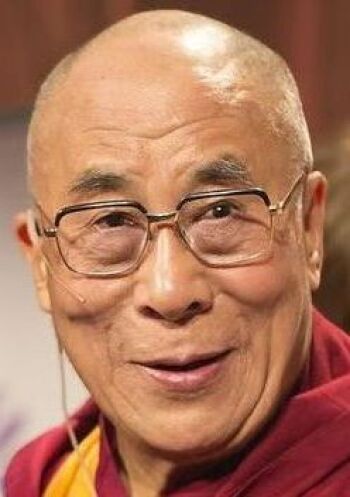
Religion and Branch: Buddhism (Tibetan)
Title: 14th Dalai Lama
Tenzin Gyatso, the 14th Dalai Lama, is the spiritual leader of Tibetan Buddhism and has been an influential figure not only in the religious sphere but also in the cultural and political aspects of Tibet, which became an autonomous region of China in the 20th century. Born in 1935, he was recognized as the reincarnation of the 13th Dalai Lama at a young age and began his monastic education soon after.
Gyatso's influence in relation to China is complex: while he has advocated for the autonomy (not independence) of Tibet and preservation of Tibetan culture and religion, the Chinese government views him as a separatist. The Dalai Lama, in his teachings and interactions worldwide, emphasizes compassion, inter-religious harmony, and the promotion of human values. He was awarded the Nobel Peace Prize in 1989 for his non-violent resistance to Chinese rule in Tibet.
Copyright © 1993—2025 World Trade Press. All rights reserved.

 China
China